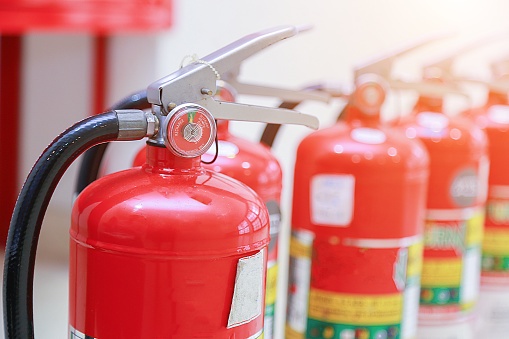Having a fire extinguisher at hand is the best thing one can employ, whether at home or elsewhere. But is your fire extinguisher up to mark and perfectly certified? Have you chosen the right one to protect your family, employees and property? CO2 cylinders for fire fighting should be carefully selected in order to ensure that they are equipped properly to fight any potential fire that may suddenly occur.
Letter Rating
CO2 cylinders for fire fighting come with a letter rating that tells you the type of fire it can put out. An extinguisher with the letter ‘A’ can be used to put out wood, paper, textile and plastic fires, while fires caused due to inflammable liquids like motor oil, kerosene, gasoline, paint, etc., can be tackled by an extinguisher that has a ‘B’ rating. Cylinders with a ‘C’ rating are specifically designed for electrical fires, and those with a ‘D’ rating are used for combustible metals. Fire extinguishing cylinders also have the rating ‘K’, used to put out fires caused by cooking oils, fats, and grease. Common household fires are tackled with cylinders with an ‘ABC’ rating, as they work on all fires.
Number Rating
A number rating will precede the letter reading. This number rating indicates the size of the fire the extinguisher can fight. To know the size of the fire the cylinder can extinguish, you need to multiply the number before an ‘A’ by 1.25 for its equivalency in gallons of water. The number preceding the B or C rating will represent the square feet. So, a 10-BC extinguisher can work for a liquid or electrical fire of up to 10 square feet.
Pressure Gauge
The pressure gauge is present on the extinguisher’s nozzle. Its purpose is to tell you whether it is ready to fight a fire. You should check the gauge on the extinguishers often as they tend to lose some of their charges over time. You can take it to a certified recharging station if it is a rechargeable unit. If not, you can always replace it with a new one.
Consider The Types Of Hazards You Are Dealing With
When buying a fire extinguisher, the fire hazards in your home will help you determine what type of fire is most likely to break out. While in most situations, fire hazards are ordinary combustible materials, other factors include flammable liquids like gas, oil, or even electrical appliances. Hence, you should consider the type of hazard you will most likely deal with. The new fire extinguishers are labeled with pictures showing the types of hazards they can extinguish.
Fire Safety At Home
The heavier the extinguishers, the more flame retardant they are and quicker and longer in delivery. Those that weigh more than 9 pounds can be harder to hold and use. However, you should buy the largest one that you can comfortably handle. Though most people find it convenient to store the extinguisher under the kitchen sink, manufacturers recommend that you mount them in their bracket, i.e., in a convenient location and plain sight. The ideal location would be 3.5 to 5 feet above the ground, so they are out of reach of small children.
Having a good fire extinguishing cylinder is one thing, and knowing how to operate it properly is another. You should not waste time reading the instructions on the cylinder after the fire breaks out. So, thoroughly read the user’s manual immediately after you buy it, familiarize yourself with their operation and register them with the manufacturer so that you are aware of any product updates or recalls. Also, ensure that the pressure indicator shows ‘full’ and that the cylinder was manufactured within the last year. Make it a point that you only buy an extinguisher that has been listed or certified by a nationally recognized testing laboratory. Dry chemical extinguishers intended to be discarded after use should be disposed of after 12 years of their manufacture.
What Size Do You Need?
As mentioned before, the extinguishing cylinders need to be large enough to effectively put out an incidents-stage fire but not so heavy that it becomes difficult for you to use. So when selecting the size of the cylinder, keep in mind the size of the room and how quickly the fire could spread given the hazards in the immediate area.
- Ten pounds: These are best for commercial spaces, warehouses, and other areas like garages or workshops where they might be more hazardous materials.
- Five pounds: They are ideal for typical offices and household spaces.
- 2-pounds: These are the ones used in cars or trucks
To Wrap Up
Once you purchase the right fire extinguisher cylinder, make sure you learn to operate it perfectly, so there isn’t any delay in fighting the fire and saving the area from damage.


No comments yet